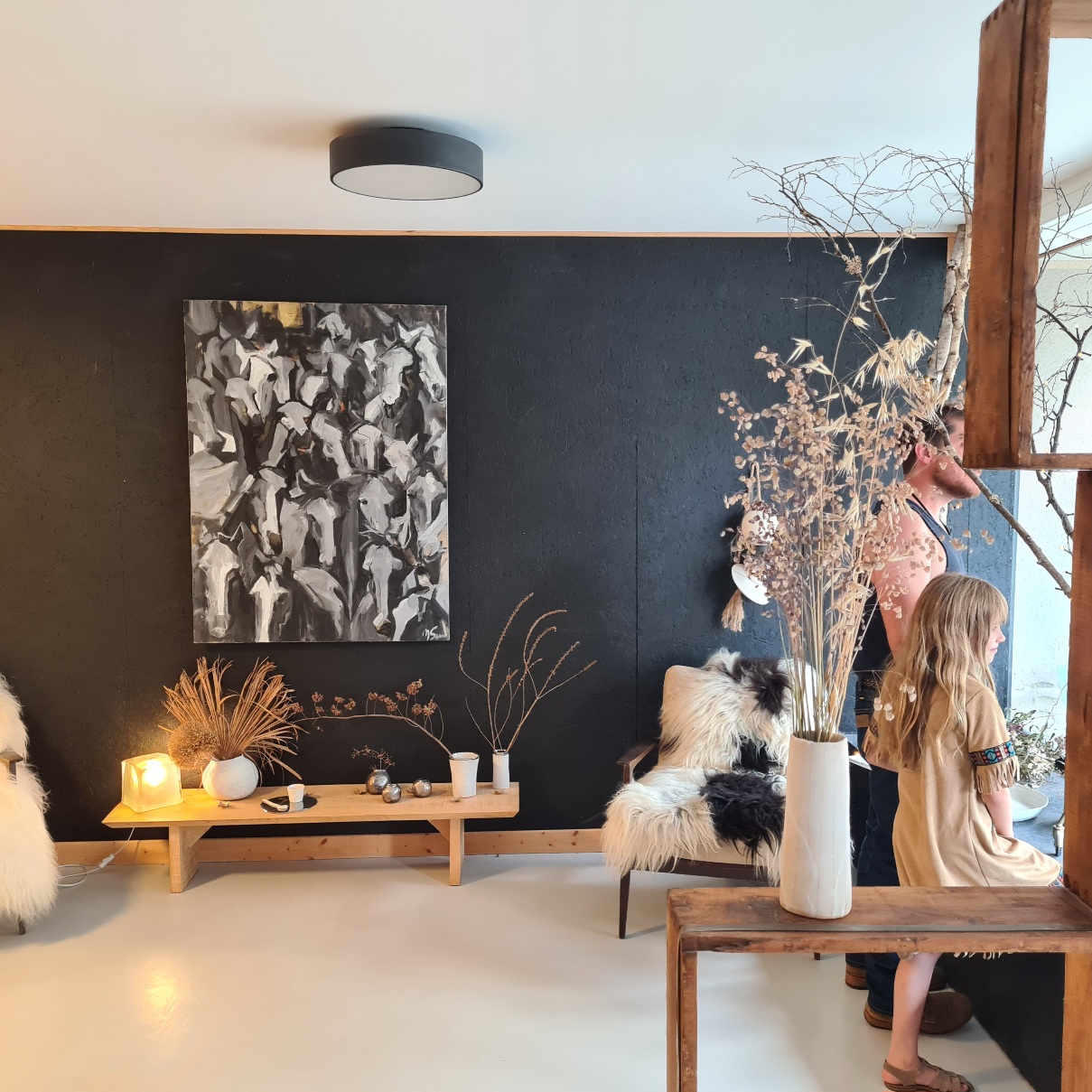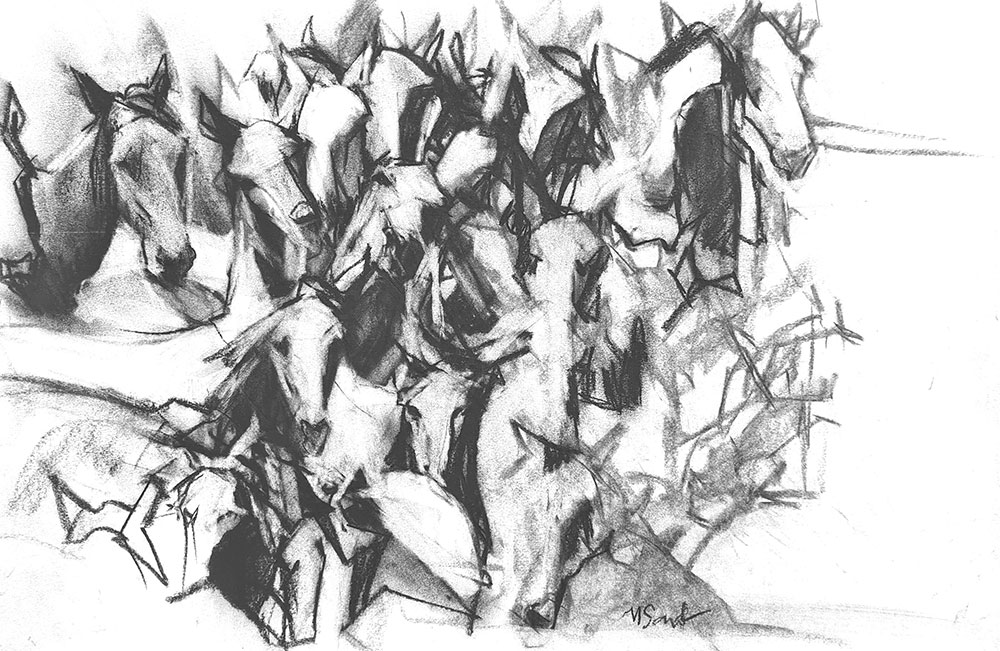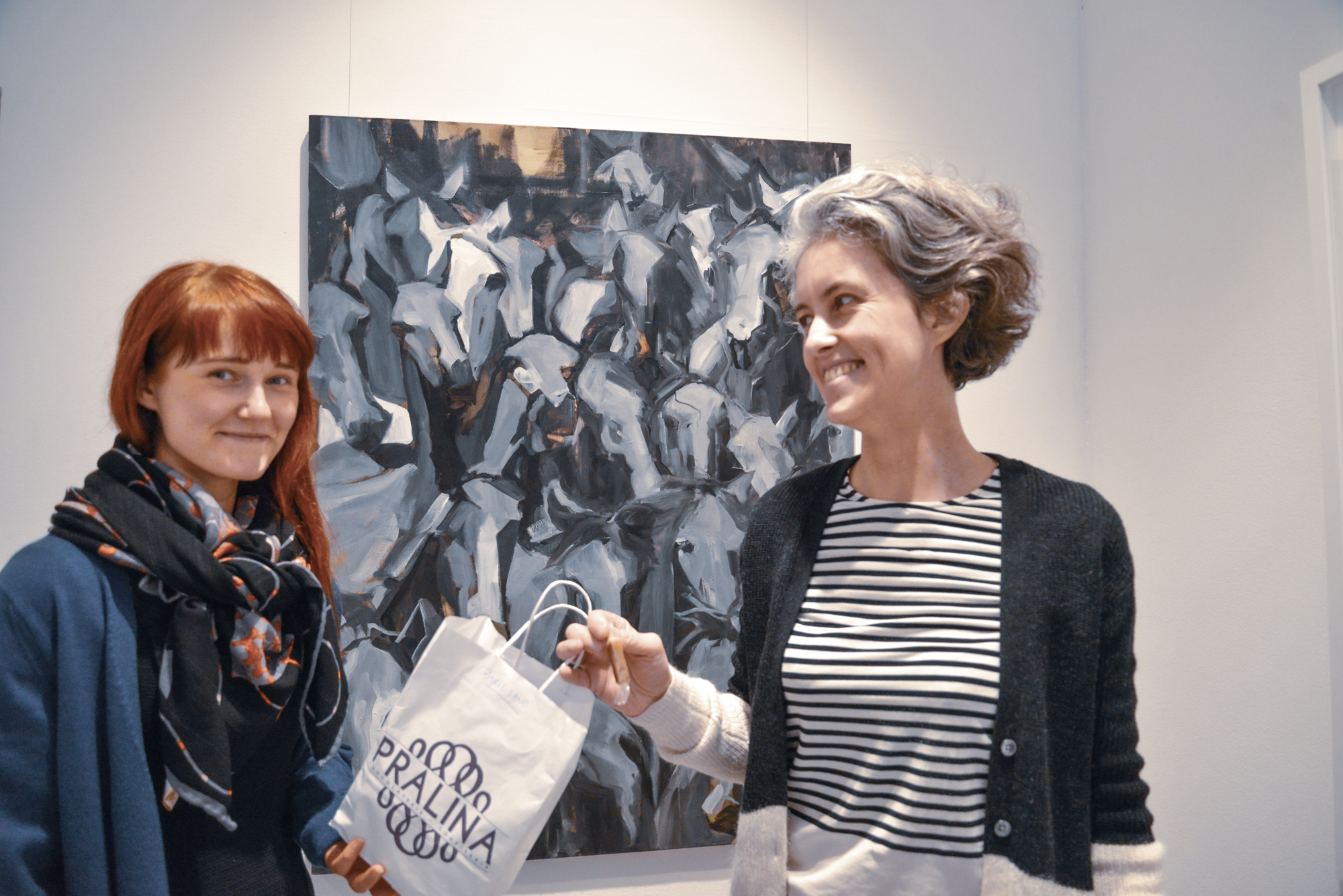
The Escape explores freedom within the group.
This oil on canvas called The Escape represents a primary artwork for three reasons:
:: It explores the fundamental value of freedom.
:: It uses an ancestral painting technique known as grisaille.
:: It is part of my research about sensitivity and its limits.
1. What was the inspiration for this work?
That summer, when I started the piece, there were gigantic fires in Australia and the Tour de France at the same time. The common point was the deployment of a group’s vital energy.
On one side, herds of horses trying to escape the flames; on the other, the peloton using the strength of the group to get to the front.
Unusually, I began with a charcoal drawing of this group in fusion. And I continued on this large canvas.
Sadly, history repeats itself. There seems that ever larger fires multiply every summer now.
2. What fundamental value is represented in this painting?
Freedom. But freedom within the group. We like to associate horses with freedom.
So what happens when our freedom depends on that of others?
What happens when we are in a group of individuals whose desires are so different from our own?
How can we combine the energy of individual freedom with that of the group, especially when we find ourselves in key moments of survival and self-transcendence?
3. Why black and white?
This approach draws on the technique known as Grisaille, which uses a monochrome palette to create depth, volume and three-dimensional form on a flat surface. It has been used in Western art for centuries, notably in the Renaissance and Baroque periods.
The idea here is to simplify and emphasize contrasts through the use of black and white.
Grisaille was used as an underpainting on which the artist would apply touches of color.
Here, I’ve done the opposite. I started on a previously painted surface and left exposed areas where touches of color would stand out.
4. Why are contrasts a fundamental principle in painting?
Contrast detection in the brain is a fundamental aspect of visual perception and plays a crucial role in our ability to perceive and interpret the visual world.
The retina contains photoreceptor cells known as rods and cones. Cones are responsible for color vision and high-resolution detail, while rods are more sensitive to light and contribute to low-light and peripheral vision.
Grisaille relies heavily on chiaroscuro, the contrast between light and dark, to give volume and three-dimensionality to the subjects depicted.
5. How does this piece fit in with my work with emotions?
In all my work, my ambition is to explore our sensibility.
I explore this sensitivity in relation to our environment, our connection to nature, to space, but also to the group. This painting explores the subject of freedom within the group. The freedom to follow our own sensibility, while at the same time being part of the group, even if it doesn’t go our way.
The tight framing contrasts with the sense of movement and urgency of the situation.


